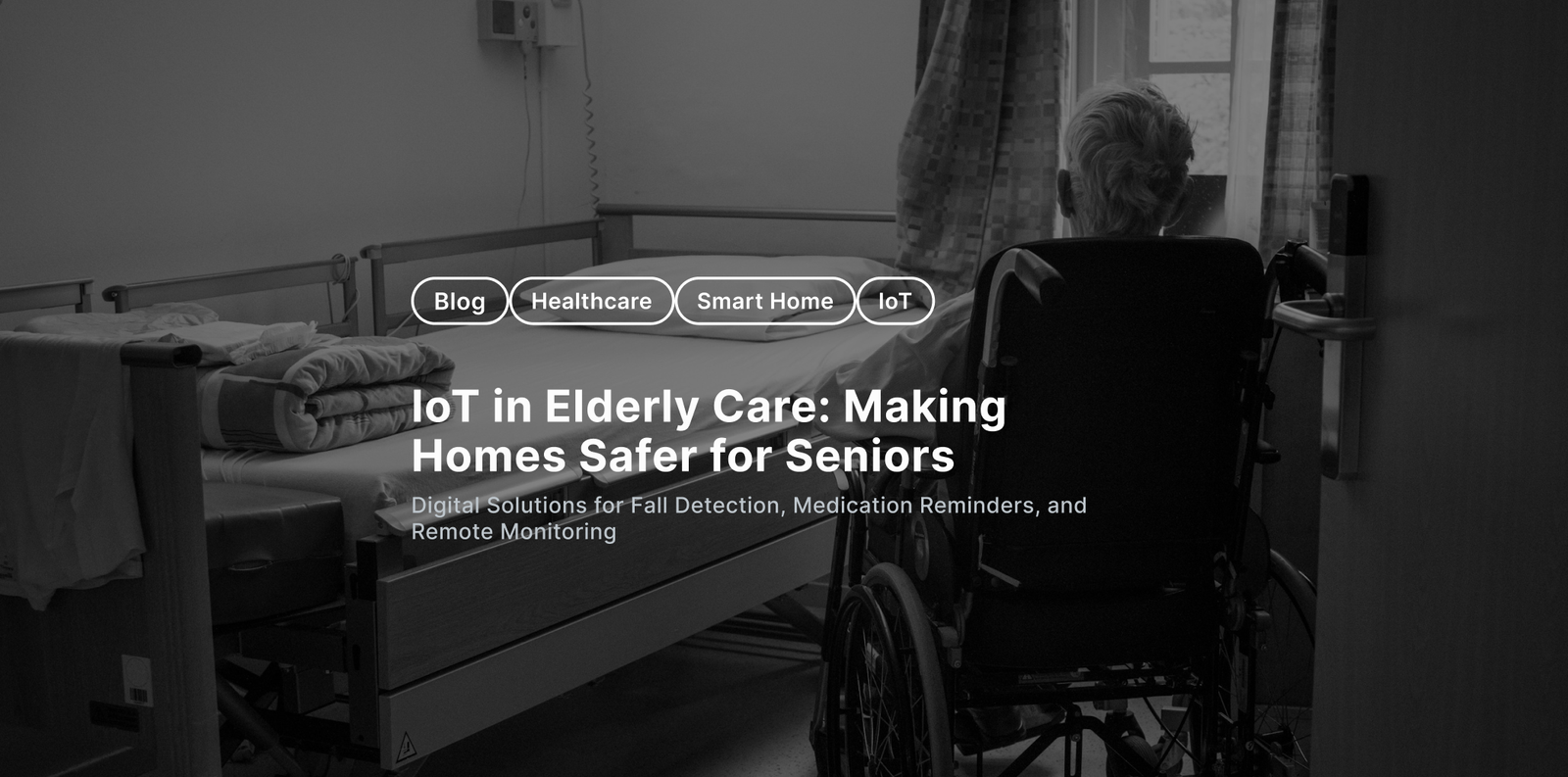✆ + 1-646-235-9076 ⏱ Mon - Fri: 24h/day
IoT in Elderly Care: Making Homes Safer for Seniors


The world’s population is aging rapidly. By 2050, the United Nations projects that over 2 billion people will be aged 60 and above. In the EU, those aged 65+ already comprise over 20% of the population. This demographic shift creates pressing challenges for healthcare systems and families alike.
Many seniors live alone, facing risks such as:
- Falls – A leading cause of injury and death in older adults.
- Health deterioration – Sudden spikes in blood pressure, irregular heartbeats, or diabetic episodes.
- Memory-related risks – Forgetting to turn off the stove or lock the door.
- Social isolation – Linked to depression and declining well-being.
Elderly individuals often hesitate to hire caregivers, and family members can’t always be nearby. Residential care facilities face understaffing and rising costs. That’s where IoT (Internet of Things) offers life-changing solutions.
How IoT Improves Elderly Care
IoT technology enables safer, smarter living for older adults. Using sensors, wearables, and cloud platforms, these systems offer continuous health tracking, emergency detection, and home automation.
Real-World Applications:
1. Health Monitoring and Alerts IoT wearables can track vital signs such as heart rate, blood pressure, and oxygen levels. When abnormalities are detected, caregivers receive instant notifications.
Example: In Israel, smartwatches approved by the Ministry of Health are detecting heart complications before symptoms even appear.
2. Fall Detection and Emergency Response Smart devices with motion sensors can detect falls and alert caregivers immediately.
Example: Hartland House in the UK uses Nobi smart lights to reduce response times and has seen an 84% drop in falls.
3. Environmental Safety and Home Automation IoT sensors detect gas leaks, water leaks, or smoke, and send reminders to turn off appliances.
Example: KYN Bickley in London uses acoustic and infrared sensors to track sleep patterns and movement, alerting staff within 30 seconds of unusual activity.
4. Remote Care and Rehabilitation Post-discharge remote monitoring allows patients to recover at home under medical supervision.
Example: Sheba Medical Center in Israel uses IoT to monitor heart patients remotely, reducing hospital readmissions.
5. Chronic Care Management Fordewind’s Vital RPM platform provides Bluetooth-connected monitoring for diabetes, hypertension, and other chronic conditions, transmitting real-time vitals to doctors for proactive care.
System Architecture and Implementation
Building IoT solutions for elderly care involves various components that ensure reliability, security, and scalability.
Use Case 1: In-Home Elderly Monitoring
Components:
- Sensors: Motion, fall, smoke, gas, door, and biosensors for vitals
- IoT Gateway: Collects and transmits sensor data (Zigbee, Wi-Fi, Bluetooth)
- Message Broker: MQTT protocol for real-time messaging
- Backend Server: Built with Java & Spring for data processing
- Mobile App: Developed with Flutter, Kotlin, or Swift for alerts and dashboards
Use Case 2: Smart Care Facilities
Components:
- Sensor Network: Installed in rooms, beds, bathrooms
- Data Aggregation Server: Java + Apache Kafka, PostgreSQL, HL7/FHIR integration
- Monitoring Dashboard: Web app built with React or Angular
- Notification System: Alerts sent to caregivers’ smartphones or pagers
Benefits of IoT in Elderly Care
- 24/7 Health Monitoring: Enables timely interventions without constant in-person supervision
- Independence and Dignity: Seniors retain autonomy without feeling watched
- Reduced Staff Workload: Automates routine monitoring and updates medical records
- Preventive Healthcare: Detects early warning signs before major symptoms arise
Challenges to Consider
Despite its advantages, IoT in elderly care presents challenges:
- Privacy: Systems must have robust encryption and access control
- Reliability: Power or network failures can disrupt monitoring
- Digital Literacy: Older users may struggle to interact with the tech
- Over-reliance on Automation: Technology cannot replace human care and empathy
Conclusion: Balancing Innovation and Compassion
IoT is redefining elderly care, offering innovative ways to enhance safety, health, and quality of life. These technologies are already saving lives and improving outcomes globally. However, successful adoption requires thoughtful design, ethical data use, and human connection.
At Fordewind, we develop smart healthcare technologies that empower providers and families. Discover how we can help you implement IoT solutions that respect both security and compassion.